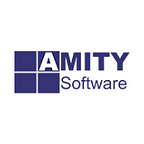How does Extended Support for SAP ECC affect Customers?
SAP has said that it will commit to offering support for ECC until 2027 under a standard support contract. But, some customers may be able to extend this timeline up to 2030.
SAP has about 50,000 ECC customers that will all need to become part of the shift to the HANA database. And ECC support has been offered since the year 2004. Which begs the question that how much of a challenge will it be to shift to the new ERP solution? By now, most SAP customers can agree that SAP ECC ERP is a time-tested solution that will get support till 2027.
What does a future upgrade to SAP S/4HANA entail?
Some experts suggest that ECC will receive support well into 2035. It is good news for companies reliant on ECC to control their business operations across Finance, HR, Logistics, Product Planning, and customer service. Moreover, it is a favorite for many customers.
But to address the rising concerns about SAP S/4HANA migration, it is prudent to take a look at the response of SAP co-CEO Christian Klein. He suggests that the SAP data migration tools may have helped smoothen the transition.
The enhanced functionality of SAP S/4HANA
After R/3, SAP S/4HANA is the fourth installment of the SAP Business Suite. But it runs on an SAP HANA database, whereas the SAP ECC solution can run a third-party database. Moreover, SAP S/4HANA is adept at solving complex problems and manage more extensive amounts of data. It can also generate real-time insights and enable you to make better business decisions.
How will customers adjust to SAP S/4HANA?
It can handle more data than R/3 or ECC. However, it started from rebuilding SAP ECC to capitalize on the HANA database’s abilities.It means that enterprises that are getting an SAP ECC to SAP S/4HANA migration need to update their existing business processes. Some industry leaders suggest that companies should utilize their current SAP systems. At least, these businesses should do so till 2035, and they can use third-party support.
Also, they should shift their funds to initiatives where there is possible growth. And by making the transition slowly, they can take a low-risk approach and gain a competitive advantage. The best idea is to move to SAP S/4HANA as soon as your business is ready and its competitors have come up with equally robust software. All of these software products should get mature so that you can flexibly choose the software platform that suits you.
Conclusion
Moving to SAP S/4HANA is quite an investment, and businesses need to take the graded approach to ensure maximum efficiency. Also, to enable better adoption of the ERP solution, they should search their options. The extension of support for SAP ECC allows you to focus on your future goals. Also, the fact that SAP ECC has been quite reliable and well-loved among SAP users till now makes this move tougher.
After the R/3 ERP system, SAP became one of the businesses to benefit from moving to a new client-server architecture. By the early 2000s, Linux was gaining traction as an alternative to Unix operating systems. The latter were proprietary. The availability of Intel Xeon in 1998, Red Hat Enterprise Linux server, and Windows Server 2000 gave organizations an option to migrate their ERP systems onto lower-cost Intel-based hardware.
The ERP systems got upgraded, and SAP GUI got updated to take into account browser-based end-user computing. However, SAP ECC has been pretty much a stable platform. And businesses will have to move to SAP S/4HANA if they wish to receive support.
